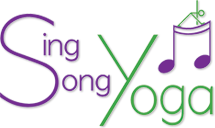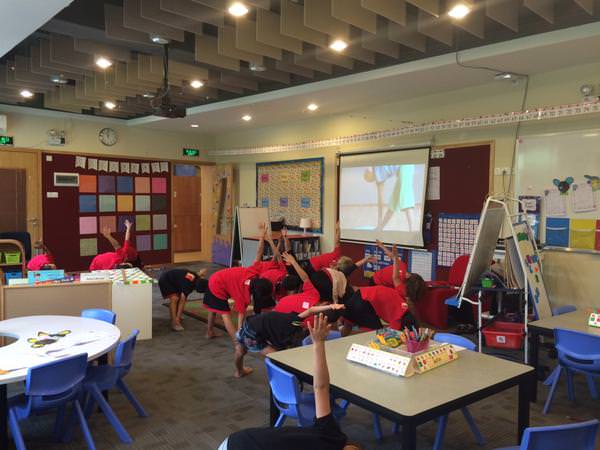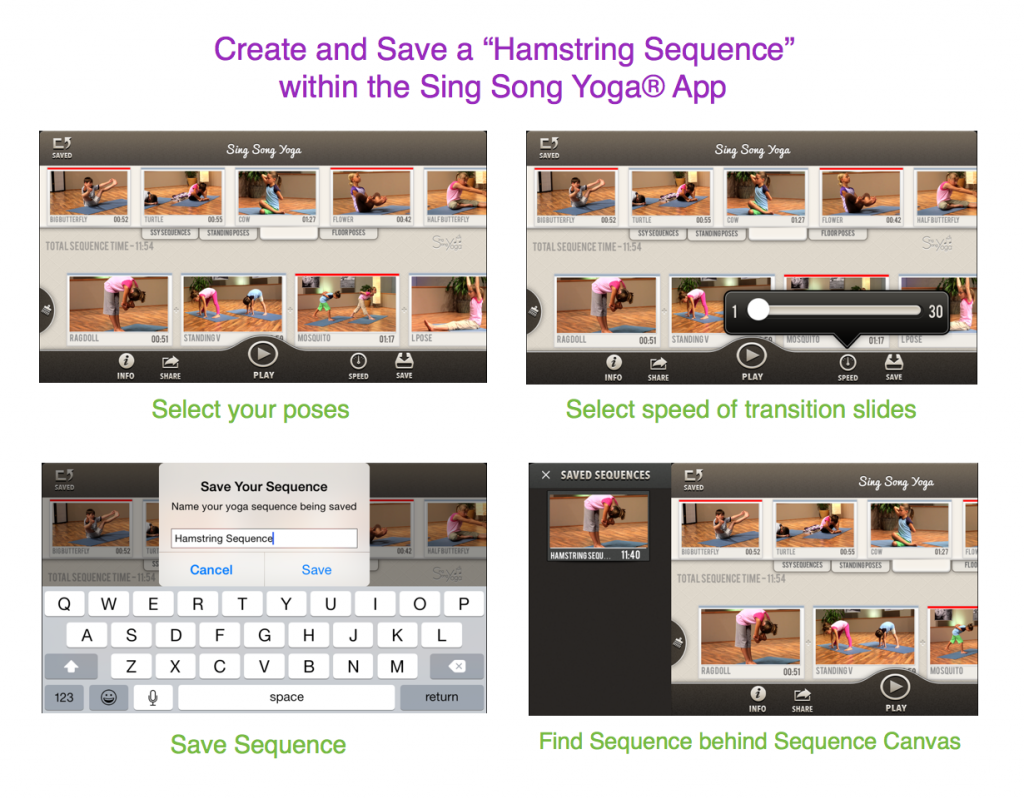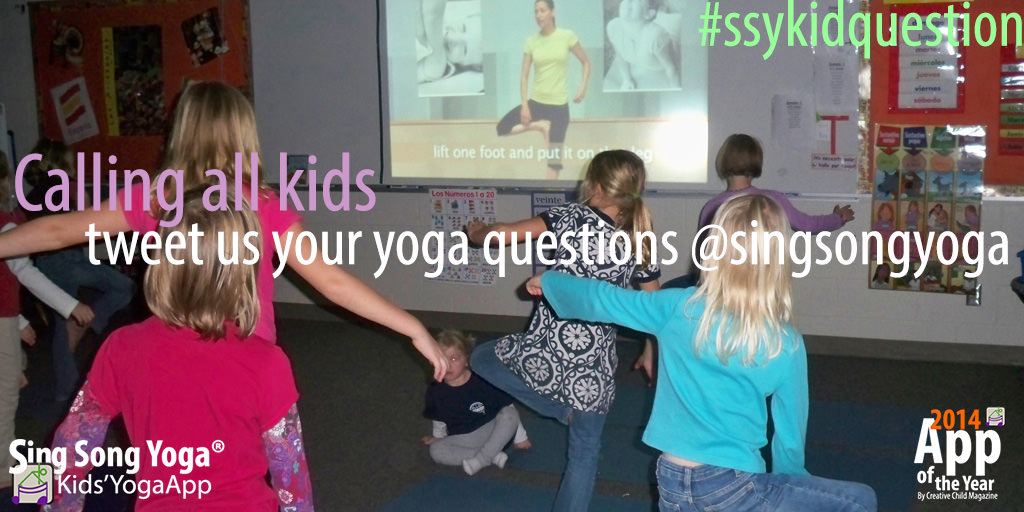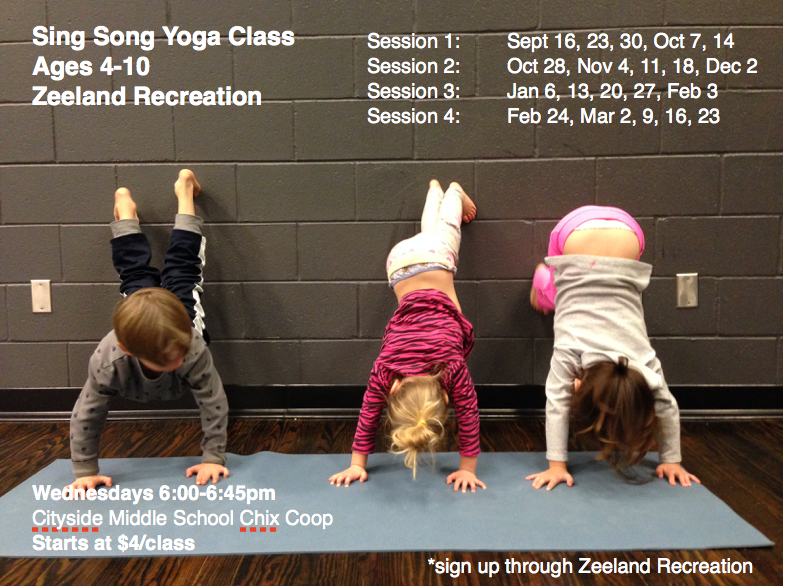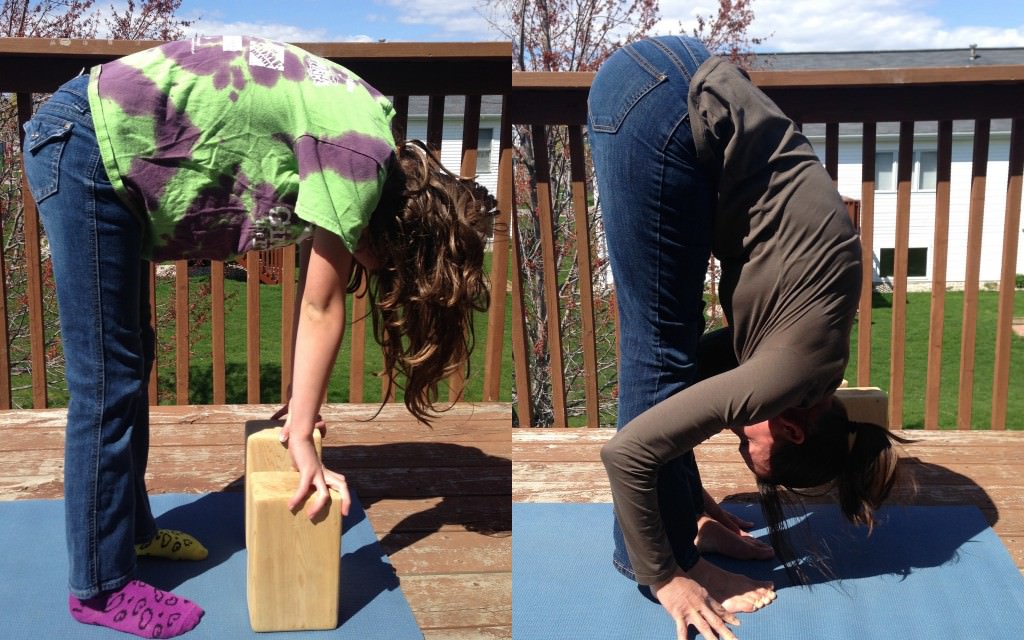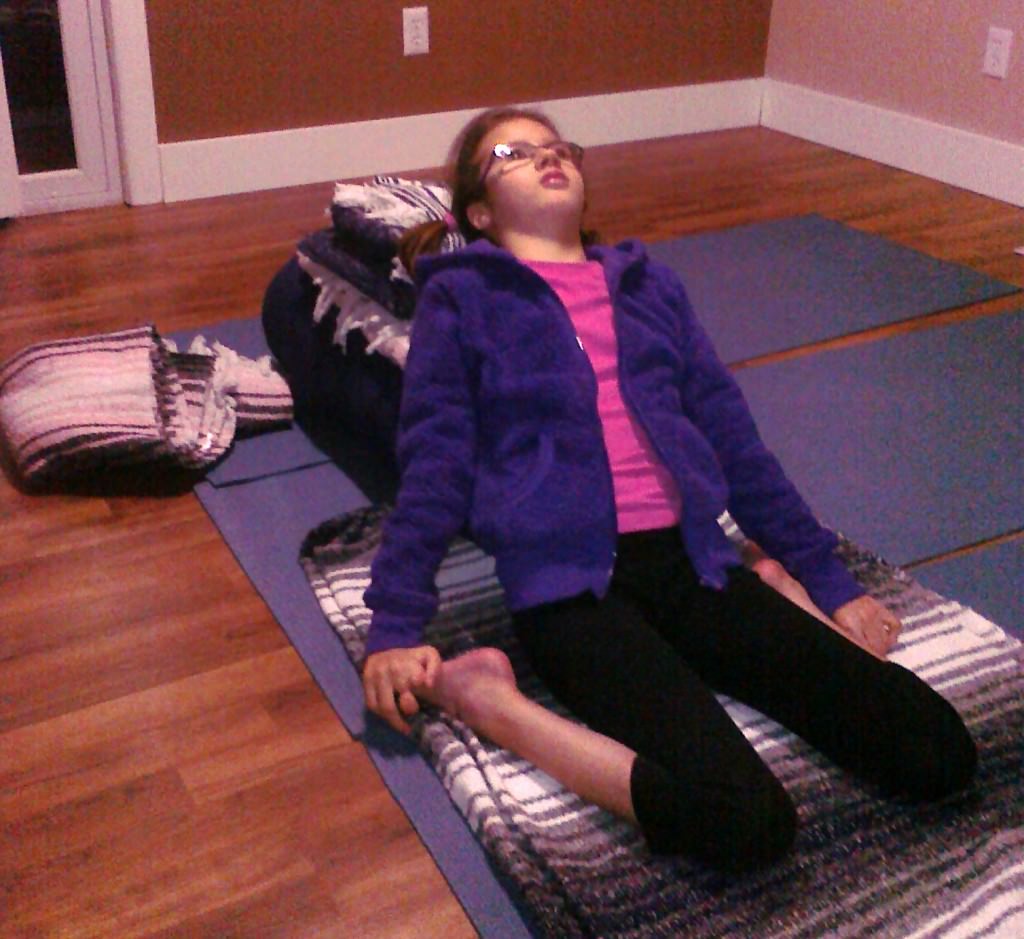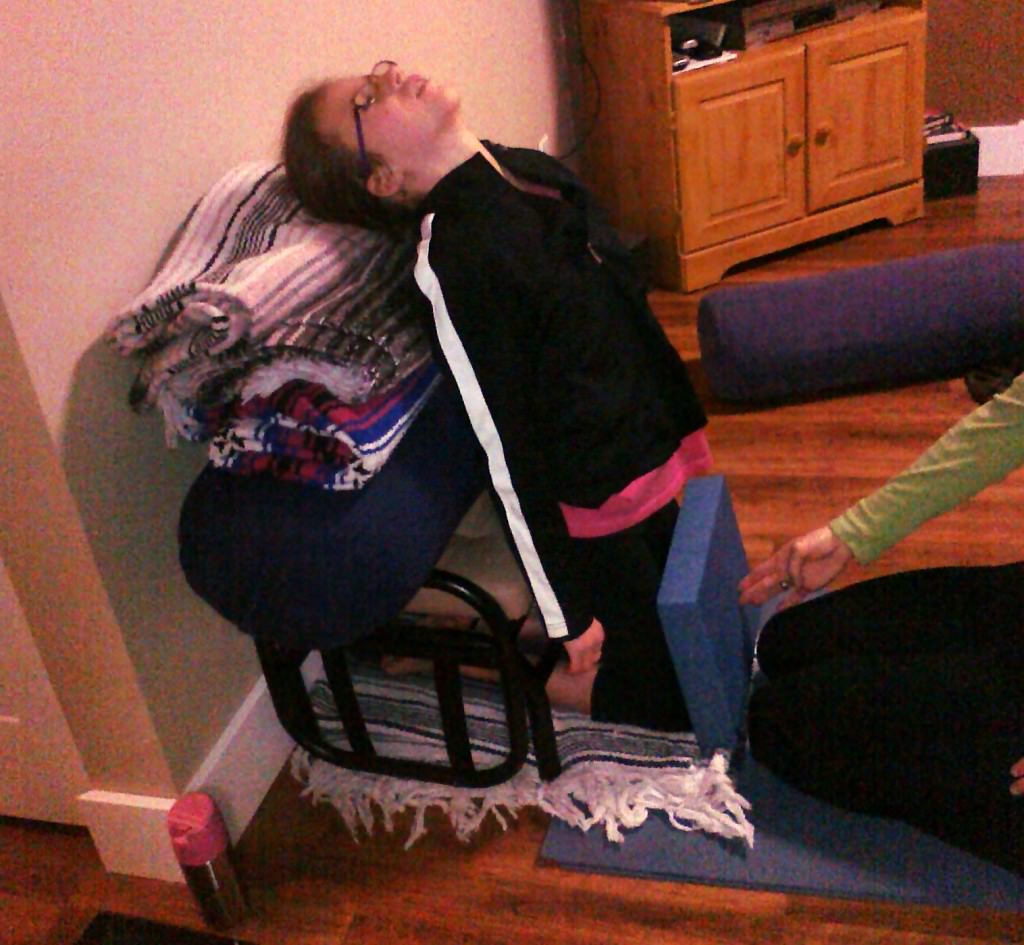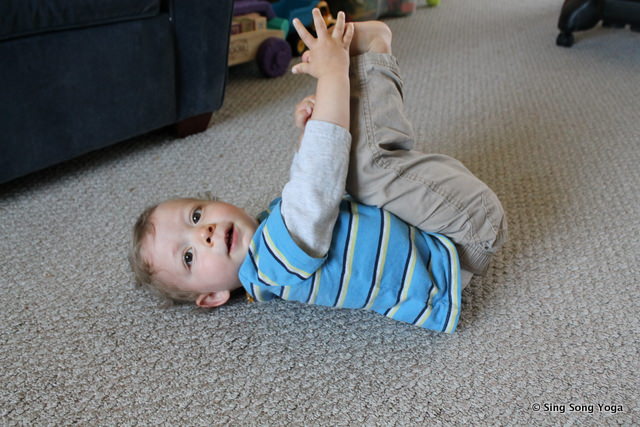Posts Tagged ‘sing song yoga’
Top 5 Kids Yoga Tips for Greater Flexibility
This topic of yoga tips for greater flexibility was inspired by a question tweeted by Mrs. Johnson’s #1stgradeyogis in China…
“We want to know how we can stretch better! Any tips?”
Thank you fabulous young yogis and your brilliant teacher, Mrs. Johnson, in China for this great #SSYkidQuestion!! We so appreciate you tweeting us questions and inspirations for other kids and their parents and teachers!
Most yogis think about their level of flexibility, so this is a relevant question for kid and adult yogis alike. Here are five yoga tips to help stretch you and your body to greater depths…
1. Begin where you are.
So, first things first — in yoga and in any other area of life… where you are is exactly the perfect place to be! Really!! And if you would like to change something, “where you are” is the perfect place from which to start. For example, if you want to touch your toes in ragdoll (uttanasana), but right now you can touch your knees, first say to yourself “I can touch my knees today. I wonder how far I will reach in a month after doing yoga regularly.” You are where you are and there is nothing better than that! Celebrate today and move forward from here!
2. There’s only one person to compare yourself to… and that’s YOU! – not anyone else.
Comparing yourself to someone else is like comparing the ocean to the forest. Each person is beautifully unique – thank goodness for that – and comparing yourself to another person helps no one.
On the other hand, look at yourself today compared to yourself… say last year at this time… You have most certainly come a long way. Celebrate that! Always compare yourself to only you and you will see growth!
Regarding yoga poses and stretching farther, try this. Do a yoga pose that you enjoy and in which you would like to stretch farther. For example, (and maybe as a group) do the L Pose (Dandasana/Paschimottanasana), hold it for a moment while you notice where your fingers land on your legs. Maybe note this on a sticky note (Deb – Sept. 2 – L Pose – finger tips at knees) and put it away. Then, a month or so later, do the same thing and just notice if your fingers land in the same place on your legs or maybe just a touch farther – and note that. If not this month, maybe next month. Either way, yoga is not about how flexible you are. It does tend to increase flexibility but it is not the most important part! Be aware of your body and how magnificent it is and what it can accomplish for you!!
3. Hold poses longer.
If you’d like to increase your flexibility one strategy you can try is to hold some poses longer than we do in the Sing Song Yoga videos. Maybe as a class, you can decide a pose for the month to hold longer during your yoga time.
For example, for the month of September, each time we do yoga let’s pause the video and hold Standing V (Upavistha Konasana) longer. Maybe the class could vote to select the pose each month.
4. Do a sequence of poses working the same muscles/muscle groups.
Several yoga poses use similar muscles to do the poses. For example, hamstrings (those muscles on our back thighs) are lengthened within many different poses. And they are often tight and a main factor in how far we can bend forward — as in Rag Doll (Uttanasana).
If we were to just hold Rag Doll for 12 minutes, most of us would get bored. But, if we were to do several different poses within those 12 minutes that each focus on lengthening those hamstrings, we would not only better achieve it, but we would add in additional benefits from the other poses as well as enjoy the variety.
So, let’s continue with the example of lengthening our hamstrings. Using the Sing Song Yoga app, as a class, you can explore what poses to include to create and save a “Hamstring Sequence.” A sample sequence could include the following:
- Rag Doll – Uttanasana
- Standing V – Prasarita Padottanasana
- Mosquito – Parsvottanasana
- Downward Dog – Adho Mukha Svanasana
- Dolphin – Pincha Mayurasana Prep
- L Pose -Dandasana/Paschimottanasana
- V Pose – Upavistha Konasana
- Big Butterfly
- Half Butterfly – Janu Sirsasana
- Savasana
That’s 10 poses in under 12 minutes, when you slide the transition speed to the left (see pic).
5. Repetition can help.
Do yoga more often… even while watching TV 🙂 If there is a pose you’d really like to improve, set a goal to try to do that pose every day. If I wanted to reach my toes in L Pose, I could try to sit in this pose each day whenever I think of it… while reading, while watching TV, while chatting with my friends, etc.
In the classroom, as a class, you could decide to sit in L Pose for a bit while you are studying your spelling words, or doing math flash cards, or reading… the possibilities are endless!
The main thing to remember is to be easy about all of this and have fun!
Thank you once again for your great question Mrs. Johnson’s #1stgradeyogis in China!! Please keep us posted on your yoga progress over the coming months! And of course, send new questions as they arise! Happy Yoga!
Please post your kids’ yoga questions on
Twitter or Facebook using #ssykidsquestions
See this link for an outline of the Simple Process for Creating and Saving a Kids’ Yoga Balancing Sequence within the Sing Song Yoga App and apply the process to creating a “Hamstring Sequence.”
Related Posts:
Yoga in Schools: Kids and Teachers Talk Kids’ Yoga A quick peek into what kids and teachers are saying about using the Sing Song Yoga app in the classroom.
Top 5 Tips to Help Balance in Kids’ Yoga: Kid Twitter Question Answered A kid question answered: “Do you have any tips to help us balance better?”
Getting Kids Ready to Write: Yoga in Schools A teacher question answered: “I was wondering the best combinations [of poses] to use [with my students] for getting ready to write.”
8 Kids Yoga Myths Some common misunderstandings about kids’ yoga.
Crossing the Midline and Kids’ Yoga Kids’ yoga is one of the many activites that can provide cross-lateral experiences for children. If done regularly might assist in building the brain for…
Top 6 Yoga Poses for Toddlers “A few months ago a parent asked how she could best do yoga with her one-year-old daughter…”
Kids’ Yoga App – Create Your Own Balancing Sequence Effortlessly create a balancing sequence with a few taps of this kids’ yoga iOS app.
Twitter Leads to Most Rewarding Visit Imaginable Sing Song Yoga founder does yoga with students she connected with on Twitter.
Kids Yoga App Series – #1. Adult Help Symbol in DVD/App Quick video explaining the “Adult Help” symbol used in the Sing Song Yoga® kids yoga app.
Kids Yoga App Series – #2. Try it Free A super quick video to demonstrate some features within the Sing Song Yoga® kids yoga app.
For more info: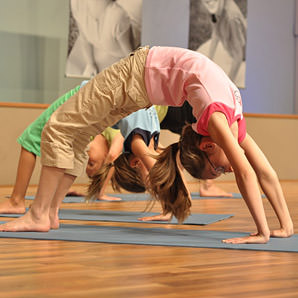
Sing Song Yoga® Kids’ Yoga App
Sing Song Yoga® kids’ yoga DVD
Sing Song Yoga® school program
This entry was posted on Tuesday, September 1st, 2015.
Posted in Kid's Yoga Sequences, Kids Yoga at Home, Sing Song Yoga, Yoga in Schools.
Tagged: app, childrens yoga, health, ipad app, iphone app, kids yoga, kids yoga app, kids yoga benefits, music and movement, schools, sing song yoga, yoga, yoga app, yoga benefits, yoga for children, yoga for kids, yoga in schools, yoga in the classroom, yoga poses
Kids Yoga App Series – #2. Try it Free
* This post is the 2nd within a series #SSYappSeries… (here’s #1)
When we were designing the Sing Song Yoga® kids’ yoga app, I held a strong focus on these questions:
- What would I want in an App? And specifically within a Kids’ Yoga app?
- What would the parents I know want?
- What would the teachers I know want?
And one main idea I kept coming back to was… “I want to try it before I buy it!” Here’s a brief video that, in sped-up fashion, shows how the app works, and the app can be found in the app store to try for free.
This video is pretty quick but we just want to give you an idea of some of its features. See Kids Yoga App Debuts in App Store for a slower-paced explanation in written form with pictures and arrows. So give the app a shot with your kids or students and see if it’s a good fit!
Please let us know any questions you might have on Facebook or Twitter, using #SSYappSeries. We look forward to hearing from you!! Happy Yoga!!
Related Posts:
Kids Yoga App Series – #1. Adult Help Symbol in DVD/App Quick video explaining the “Adult Help” symbol used in the Sing Song Yoga® kids yoga app.
8 Kids Yoga Myths Some common misunderstandings about kids’ yoga.
Crossing the Midline and Kids’ Yoga Kids’ yoga is one of the many activites that can provide cross-lateral experiences for children. If done regularly might assist in building the brain for…
Top 6 Yoga Poses for Toddlers “A few months ago a parent asked how she could best do yoga with her one-year-old daughter…”
Kids’ Yoga App – Create Your Own Balancing Sequence Effortlessly create a balancing sequence with a few taps of this kids’ yoga iOS app.
Yoga in Schools: Kids and Teachers Talk Kids’ Yoga A quick peek into what kids and teachers are saying about using the Sing Song Yoga app in the classroom.
Top 5 Tips to Help Balance in Kids’ Yoga: Kid Twitter Question Answered A kid question answered: “Do you have any tips to help us balance better?”
Getting Kids Ready to Write: Yoga in Schools A teacher question answered: “I was wondering the best combinations [of poses] to use [with my students] for getting ready to write.”
Twitter Leads to Most Rewarding Visit Imaginable Sing Song Yoga founder does yoga with students she connected with on Twitter.
For more info:
Sing Song Yoga® Kids’ Yoga App
Sing Song Yoga® kids’ yoga DVD
Sing Song Yoga® school program
This entry was posted on Thursday, August 27th, 2015.
Posted in Kids Yoga at Home, Sing Song Yoga, Uncategorized, Yoga in Schools.
Tagged: app, children, childrens yoga, ipad app, iphone app, kids yoga, kids yoga app, music, music and movement, sing song yoga, yoga in schools
Kids Yoga Classes in Zeeland
As school begins for kids over the next few weeks remember to provide them with times to reconnect by deliberately quieting their outside world. Kids’ Yoga is a great way to provide the time and space to do just that… and so much more.
We’d love to have you join us for any or all of our five-week sessions!
Zeeland Recreation Registration Methods
1. Online at: http://recreation.zps.org
2. In person, mail or drop-box: 320 East Main,Zeeland, Michigan 49464
3. Phone: 616.748.3230
4. Fax: 616.748.3234
Visa, MasterCard, Discover, checks and cash accepted. Checks made payable to: Zeeland Recreation.
Office Hours: Monday-Thursday, 8:00am-4:30pm, Friday, 8:00am-4:00pm
Related Posts:
8 Kids Yoga Myths Some common misunderstandings about kids’ yoga.
Crossing the Midline and Kids’ Yoga Kids’ yoga is one of the many activites that can provide cross-lateral experiences for children. If done regularly might assist in building the brain for…
Top 6 Yoga Poses for Toddlers “A few months ago a parent asked how she could best do yoga with her one-year-old daughter…”
Kids’ Yoga App – Create Your Own Balancing Sequence Effortlessly create a balancing sequence with a few taps of this kids’ yoga iOS app.
Yoga in Schools: Kids and Teachers Talk Kids’ Yoga A quick peek into what kids and teachers are saying about using the Sing Song Yoga app in the classroom.
Top 5 Tips to Help Balance in Kids’ Yoga: Kid Twitter Question Answered A kid question answered: “Do you have any tips to help us balance better?”
Getting Kids Ready to Write: Yoga in Schools A teacher question answered: “I was wondering the best combinations [of poses] to use [with my students] for getting ready to write.”
Twitter Leads to Most Rewarding Visit Imaginable Sing Song Yoga founder does yoga with students she connected with on Twitter.
For more info:
Sing Song Yoga® Kids’ Yoga App
Sing Song Yoga® kids’ yoga DVD
Sing Song Yoga® school program
This entry was posted on Wednesday, August 19th, 2015.
Posted in Sing Song Yoga.
Tagged: children, childrens yoga, kids, kids yoga, kids yoga app, kids yoga benefits, sing song yoga, yoga for kids
8 Kids Yoga Myths
A dictionary meaning of the word myth is — “a widely held but false belief or idea.” Ultimately ideas are yoga myths or not, only in the eye of the beholder. But I’d like to challenge some common misunderstandings about kids yoga.

Adho Mukha Svanasana (tunnel of downward dogs)
Here are eight ideas that I typically hear from parents that I would consider yoga myths in the world of kids yoga:
1. My kid is not flexible enough to do yoga.
I hear from parents, about their children, and from adult students that they’re not flexible enough for yoga. This one is the misunderstanding that I run into the most often. Yes, over time many experience increased flexibility from doing yoga, but it’s not a prerequisite.
Doing yoga poses has many benefits within the process, one of which is gaining increased flexibility. But as an example. let’s compare two yogis doing a forward bend (Uttanasana).
“Yogi A” uses blocks under her hands because she doesn’t touch the floor. And “Yogi B” folds forward more completely, turning her ribcage upside down with the crown of her head comfortably pointing toward the floor without strain.
Each of these yogis experience similar benefits from the pose. It’s not as much about how far the yogi bends, it’s more about the alignment in the pose and the relative range of movement. For example, focusing on just one aspect of the pose, each yogi is stretching their hamstrings. The relative movement achieved with their personal full extension of their muscles provides the benefit – not the ultimate length that’s achieved. It’s likely that the beautiful photos of yogis bending in seemingly impossible ways contribute to this misunderstanding, however, just know that yoga works for all flexibility levels. That’s one of the benefits that fits everyone.
Furthermore, the less flexible folks can actually be less prone to certain injuries because their bodies give them some natural limits that the more flexible yogis might need to discover on their own. There’s no need to be flexible to do yoga!
2. My child is too hyperactive to do yoga
One common benefit of yoga is that many experience a calming effect. Due to this fact, some feel that their children are too hyperactive to do yoga. However, a child might find that the opposite is true. The calming effect on the nervous
system that yoga can provide might be a good reason for some children to find yoga. Again it’s a relativity thing. Similar to the range of muscle movement (in number one) being the important factor providing benefit, it’s the relative range of the calming effect that provides the benefit. For example, a child who begins in a perceived hyperactive state and ends in a more typical active state might be achieving that same benefit as a typically active child ending a yoga session in a more perceived calm state. It’s the relative change that is the important factor, not the overall perception of where others want that child to be (or behave). The nervous system holds the imprint of the change even if those outside the child’s body can’t see it as clearly through behavior.
3. My child can’t focus enough to do yoga.
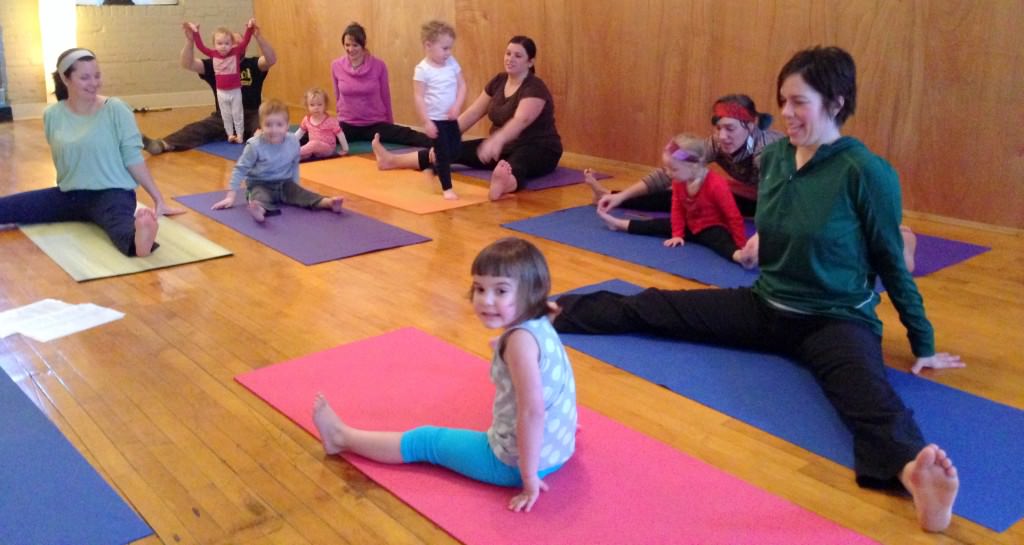
Upavistha Konasana (seated wide leg pose)
We have a bit of a relativity theme going here, but it applies to focus as well. Some children can sit and build puzzles for a seemingly endless span of time and some can barely sit long enough to open the box to begin. The idea of “I am where I am” applies here. There’s no good or bad, there’s only the perception of such. And though it is true that yoga can eventually result in an improved ability to focus, it too is not a prerequisite. Some young yogis do a Downward Dog (Adho Mukha Svanasana) for 3 seconds and then need to get up and run around their mat before they are ready for another. This child still gains benefit from the 3 seconds in dog even if it might not look the same as the child who can remain in Dog for 30 seconds. Growth is measured by looking at a particular skill in the beginning and comparing it to the skill after a period of time. So if this young yogi moves from doing Downward Dog for 3 seconds at the beginning of a 10-week session up to 8 seconds at the end of this time, then growth in the pose and benefit for the child has been achieved.
If you come across a yoga teacher who expects your child to do things the same as all other students in your class, it might be helpful to find a new teacher. Yoga should remain outside the tradition of trying to get children to conform to the same robot-like conformity that is still expected in some settings. Yoga is personal. Its benefits are illustrated in personal ways. Avoid comparing your child to others and enjoy comparing your child today to your child a year ago. Growth has occurred – whether it fits the norm or not (inside or outside of yoga).
4. My child cannot do yoga because of physical limits.
Whether your child is a fully able-bodied child or a child with some limits, the benefits of yoga can be experienced by most. One of my beloved young yogis who is limited physically was limitless in her determination to experience the joys and benefits of yoga as she achieved each. We together found one or more aspects of each pose that would be perfect for her to work on in that particular session. For example, when working on the sitting forward bend (Paschimottanasana), one session we focused our attention on lengthening her calves, in the opposite direction of her high tone, extending through her inner heels and pulling her toes toward her shins. In another session we would focus on pressing her thighs into the floor. In yet another session we would work on lengthening from her hips up through her chest taking her shoulders away from her ears. This is similar to focus changes in fully able-bodied adults from session to session, but we broke it down in a child-friendly way for her to experience results.
5. My kid is an athlete and would not like yoga
Though yoga is growing in popularity in the States, there can sometimes still be a perception that athletes are not the “yoga type.” Again, the opposite can be true. Athletes in many different sports have enjoyed the multitude of benefits from yoga due to the simple fact that yoga can provide a positive soothing balance for the sometimes overused muscles and emotional energy that the stream-lined goal focus within each sport can invoke. In addition, the breadth of focus in yoga, meaning the broad range of positive effects on the body, might assist the athlete in preventing injury.
6. Some kids are just not the “yoga type.”
Again, there still exists this idea that a person is either the “yoga type” or not but it’s simply not true. Virtually everyone can benefit from some time to deliberately chill while focusing on ones’ body in space. Each child or adult experiences yoga in his or her own personal way. There’s no “type” of person more likely to find benefit. The only aspect necessary is the willingness to give it a shot. And the only necessity to continue is the desire to do so.
7. Yoga is not for boys or men.
This is slowly changing but still remains an underlying belief for many. Yoga classes typically have more women than men, but as men continue to discover the benefits of yoga and these next generations begin yoga as kids, this will eventually fade out. As with most biases, children learn these from adults. Boys, themselves, come into this world as natural yogis. But a myriad of societal influences can eventually persuade boys that there are some things that boys just do not do. This yoga myth will eventually fade and your family can be a part of this change. Boys can benefit greatly from yoga as mentioned in the characteristics outlined in the other myths in this post.
8. As a parent, I should know yoga before introducing my child to it.
As outlined in 6 Tips to Dive Right into Kids Yoga, there is simply no experience necessary to begin yoga – as an adult or as a child. Every single person is a beginner when starting something new. Your yoga instructor (a live person or through a book) will guide you through beginning yoga. So just dive right in!
Related Posts:
Crossing the Midline and Kids’ Yoga Kids’ yoga is one of the many activites that can provide cross-lateral experiences for children. If done regularly might assist in building the brain for…
Top 6 Yoga Poses for Toddlers “A few months ago a parent asked how she could best do yoga with her one-year-old daughter…”
Kids’ Yoga App – Create Your Own Balancing Sequence Effortlessly create a balancing sequence with a few taps of this kids’ yoga iOS app.
Yoga in Schools: Kids and Teachers Talk Kids’ Yoga A quick peek into what kids and teachers are saying about using the Sing Song Yoga app in the classroom.
Top 5 Tips to Help Balance in Kids’ Yoga: Kid Twitter Question Answered A kid question answered: “Do you have any tips to help us balance better?”
Getting Kids Ready to Write: Yoga in Schools A teacher question answered: “I was wondering the best combinations [of poses] to use [with my students] for getting ready to write.”
Twitter Leads to Most Rewarding Visit Imaginable Sing Song Yoga founder does yoga with students she connected with on Twitter.
For more info:
Sing Song Yoga® Kids’ Yoga App
Sing Song Yoga® kids’ yoga DVD
Sing Song Yoga® school program
This entry was posted on Thursday, April 30th, 2015.
Posted in Benefits of Yoga, Education, Kids Yoga at Home, Parenting, Sing Song Yoga, Yoga in Schools.
Tagged: children, childrens yoga, ipad app, kids yoga, kids yoga benefits, myths of kids yoga, myths of yoga, parenting, schools, sing song yoga, yoga in schools, yoga in the classroom
6 Reasons I Want My Kids to Learn Through the Arts in Schools
Schools are changing, by necessity and through driven educators, but is happening s – l – o – o – o – w – l – y! I’m really itching to see changes occur at a much faster pace at this point in my life! My own children are at an age where I’m incessantly looking for something significantly different. I continuously explore the variety of alternatives available. This post will discuss learning through The Arts in schools — not as a side activity, but actually using the arts as the method to teach. Teaching math, reading, writing, science, social studies, etc. through music, movement, drawing, theater, poetry, etc.
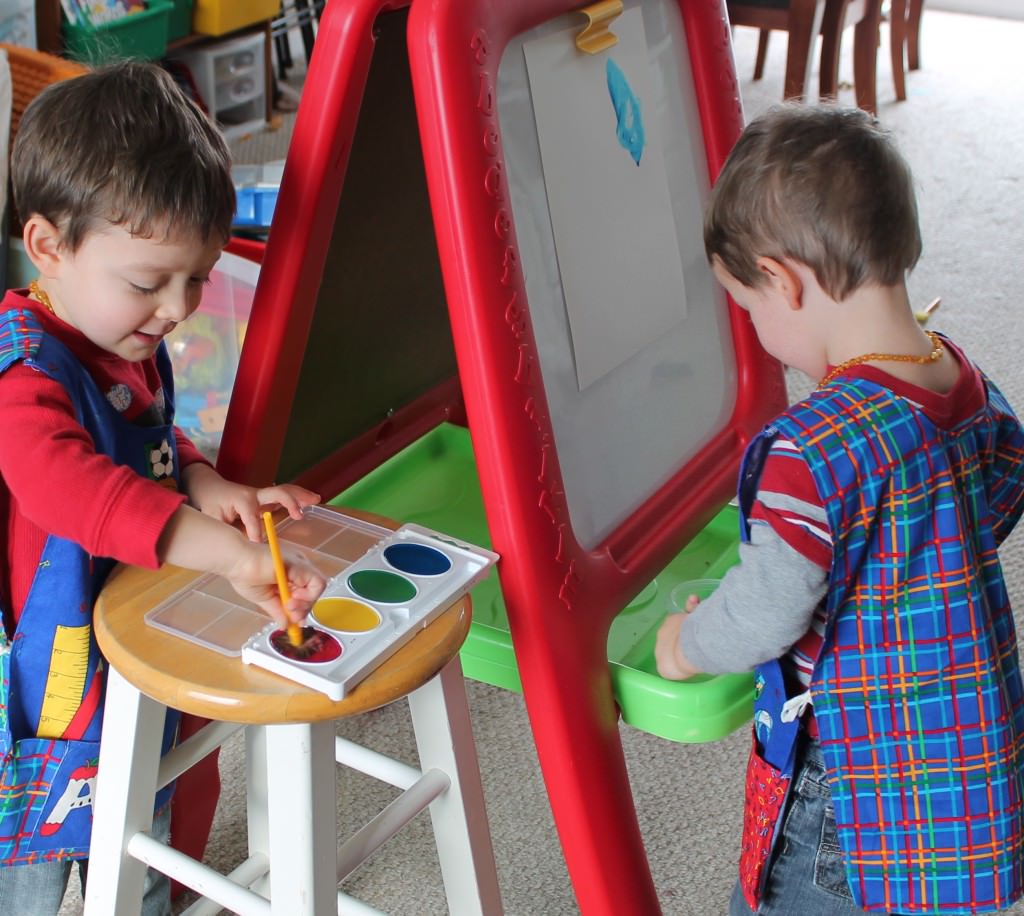
Learning the arts through a specialist is critical to learn each “art” in greater depth. At the same time learning our content through the arts allows us to deepen our learning of all subjects!
Will teaching through the arts fix everything that is missing in education? It’s not likely. But it can vastly improve the experience and results for kids and our communities. According to Linda Crawford in her book Lively Learning: Using the arts to teach the K-8 Curriculum, there are 6 powerful reasons for integrating the arts into the daily curriculum and I will explore each of these below.
1. The arts make the content more accessible
The idea of teaching the school curriculum through the arts to make content more accessible seems to be the most obvious reason for making it a part of our classroom. The arts are able to reach all different types of learners simply because the arts in and of themselves have stemmed from our human desires over the centuries. We weren’t told we had to dance or draw, we were simply given the materials to explore them naturally. We weren’t forced to tell stories or listen to others tell stories, we were just naturally drawn to doing so. In using the arts, drawing might provide students with a jumpstart to writing or math. Students who learn most powerfully through their bodies, kinesthetic learners, might first act out a fairy tale or a story problem to better access a deeper understanding of each. When a teacher provides the opportunity to use the arts within the content area it not only reaches more students’ learning styles but it also enhances the depth of learning for each individual student. It provides them the opportunity to explore through a wider range of experiences. This not only engages more of the brain for easier learning, but it allows students to discover naturally their own strengths and most powerful interests, thus leading to more powerful learning and growth.
2. The arts encourage joyful, active learning
If I were to ask you to remember some of your most joyful learning in elementary school, you’re likely able to easily remember some. When our learning is connected with joyful authentic purposes, it literally changes the chemistry of the brain and has the potential to open up the gateway to our long-term memory. Emotions are powerfully connected to our learning. Learning in a drab, emotionally-devoid environment takes so much more work and energy as compared to learning in a joyful way. It would seem obvious to most that integrating the capacity of the arts, including the positive emotions often elicited through them, provides greater opportunity for learning and growth.
3. The arts help students make and express personal connections to content
When I meet someone and learn their name I do my best to remember it – at least for the time period that I’ll be spending with them. I have found over time that if I make a connection (relate it to something I know) right away I’m more likely to remember. If her name is Mary, I connect it to my sister, etc. If it’s a name I’ve never heard of, I connect the parts of the name to something familiar. Last week I met a guy named Artiaysa (ART-I-ESSA). It took me a moment, but I made three connections to remember it. “Art”, of course. “Eye” in the middle and my niece Tessa for the end. Making connections from the know to the unknown is necessary for learning.
If I was in the classroom and learning new vocabulary, I could draw a simple sketch of the parts of the words. Students could also use poetry, songs, theater/videography to make and express these personal connections to these new words and to their understandings of each. If I can connect it to my life, I can remember it. Additionally if it interests me, it adds extra potential for greater depth of understanding. The arts can add to the interest level of subject matter simply by providing additional avenues for expression of the new concepts. If I have the chance to write a song about photosynthesis, for example, it instantly ups my interest level.
4. The arts help children understand and express abstract concepts
Abstract ideas are those that need to be visualized or imagined as they cannot be illustrated through concrete examples. Learning letters and their sounds is an abstract concept for children. But teaching the alphabet through the arts naturally allows for a deeper level of understanding and use/expression of the letters… aka reading.
One example of using the arts to learn the alphabet is using music, movement and sounds along with the visible letter to transform the abstract shape of the letters to a more concrete understanding. As students repeatedly connect the abstract letters to the concrete experiences they gradually move toward reading… turning those abstract letters and sounds into words and sentences with real meaning.
5. The arts stimulate higher-level thinking
According to Linda Crawford, in the above mentioned book, there are three kinds of thinking we want to encourage in our kids: attending, discerning, and inventing. She says that attending and discerning are more analytical skills, but inventing takes students a step further to building upon what they’ve learned to make new meaning. This, she says, required imaginative understanding.
The arts are a natural way to encourage all three types of learning within our classroom. They can help children move from a more-in-depth understanding of the world as it is, as well as encourage children to imagine the possibilities of what it can be.
6. The arts build community and help children develop collaborative work skills
The benefits of integrating the arts into the content areas is multiplied when students work together to create and learn. When we work in a creative manner and throughly enjoy the process and the final product, the depth of learning and experience is enhanced dramatically. In my kindergarten classroom one simple collaborative creative activity is making up movements to our songs. The movement, music, fun, and collaboration combined work beautifully together to help the children not only remember the song lyrics more easily, but also provides a deeper understanding of the subject matter being shared within the song lyrics.
Learning the arts through a specialist is critical to learn each “art” in greater depth. 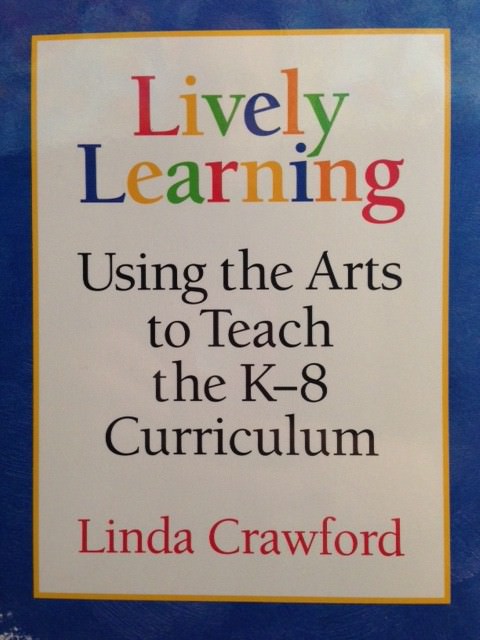 At the same time learning our content through the arts allows us to deepen our learning of all subjects! Our children greatly benefit from both! So let’s work together as educators to begin giving the arts a try within our curriculum in addition to the critical learning that occurs through the specific arts classes with a specialist. Thank you to Linda Crawford for sharing the basis for this post in her book Lively Learning: Using the Arts to Teach the K-8 Curriculum. And if you’re interested in giving it a shot, this book is a nice resource.
At the same time learning our content through the arts allows us to deepen our learning of all subjects! Our children greatly benefit from both! So let’s work together as educators to begin giving the arts a try within our curriculum in addition to the critical learning that occurs through the specific arts classes with a specialist. Thank you to Linda Crawford for sharing the basis for this post in her book Lively Learning: Using the Arts to Teach the K-8 Curriculum. And if you’re interested in giving it a shot, this book is a nice resource.
Related Posts:
Crossing the Midline and Kids Yoga Kids’ yoga is one of the many activites that can provide cross-lateral experiences for children. If done regularly might assist in building the brain for…
Top 6 Yoga Poses for Toddlers “A few months ago a parent asked how she could best do yoga with her one-year-old daughter…”
Kids Yoga App – Create Your Own Balancing Sequence Effortlessly create a balancing sequence with a few taps of this kids yoga iOS app.
Top 5 Tips to Help Kids Yoga Balance: Kid Twitter Question Answered A kid question answered: “Do you have any tips to help us balance better?”
Getting Kids Ready to Write: Yoga in Schools A teacher question answered: “I was wondering the best combinations [of poses] to use [with my students] for getting ready to write.”
Twitter Leads to Most Rewarding Visit Imaginable Sing Song Yoga founder does yoga with students she connected with on Twitter.
For more info:
Sing Song Yoga® Kids’ Yoga App
Sing Song Yoga® kids’ yoga DVD
Sing Song Yoga® school program
This entry was posted on Friday, April 17th, 2015.
Posted in Education, Parenting, Yoga in Schools.
Tagged: kids yoga, learning through the arts, music and movement, sing song yoga, teaching through music and movement, the arts, the arts in school, the arts in schools, the arts in the classroom, yoga for kids, yoga in schools, yoga in the classroom
